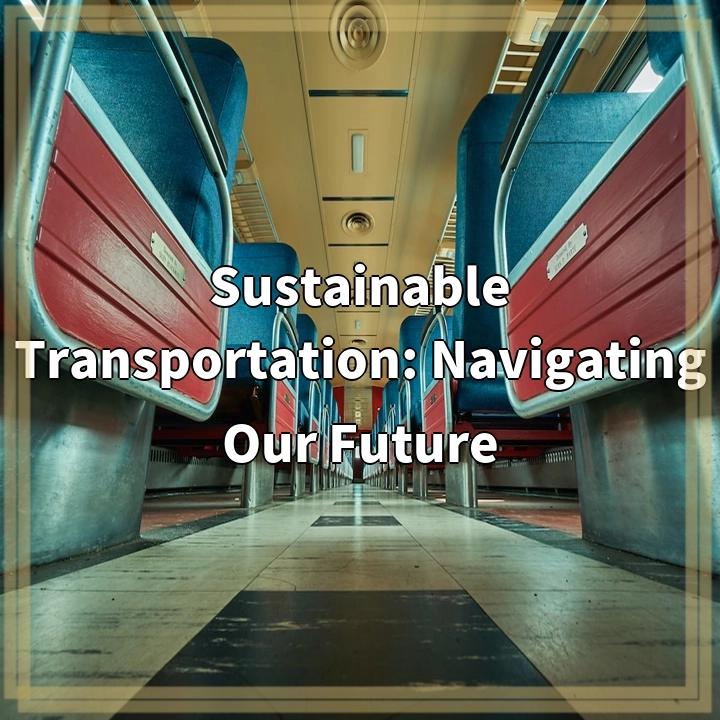
What is Sustainable Transportation?
As cities grapple with the challenges of rapid urbanization and increased congestion, sustainable transportation has emerged as a crucial solution. It refers to the use of transportation systems and modes that minimize negative environmental, social, and economic impacts. Sustainable transportation aims to provide efficient and accessible options while reducing greenhouse gas emissions, promoting public health, and enhancing overall quality of life.
Real-World Problems with Sustainable Transportation
While sustainable transportation offers numerous benefits, there are still challenges to overcome in implementing and adopting these practices on a larger scale.
1. Lack of Infrastructure:
One of the primary obstacles is the lack of adequate infrastructure. Many cities do not have the necessary infrastructure to support sustainable transportation options such as bike lanes, pedestrian-friendly sidewalks, or efficient public transportation systems. Without these facilities, it becomes difficult for people to choose sustainable modes of transportation.
2. Limited Accessibility:
Sustainable transportation options may not be accessible or available to everyone. In some areas, public transportation may be unreliable, inefficient, or too expensive. This leaves individuals with no choice but to rely on private vehicles, contributing to traffic congestion and increased pollution.
3. Mindset and Behavior Change:
A significant barrier to adopting sustainable transportation practices is changing people’s mindset and behavior. Many individuals are accustomed to using private vehicles as their primary mode of transportation due to convenience or habit. Encouraging a shift towards sustainable options requires education, awareness programs, and incentives to motivate people to change their habits.
4. Funding and Resources:
Implementing sustainable transportation measures often requires significant funding and resources. Building infrastructure, improving public transportation systems, and developing alternative fuel options all come with financial implications. Securing funding and allocating resources for sustainable transportation projects can be challenging for governments and organizations.
5. Land Use and Planning:
Urban planning plays a vital role in sustainable transportation. In many cities, urban sprawl and inadequate land use planning have led to longer commutes, increased traffic, and a greater reliance on personal vehicles. Addressing these issues requires comprehensive land use planning that prioritizes compact, mixed-use developments and promotes walkability, cycling, and public transportation.
While these challenges may seem daunting, they also present opportunities for innovation and collaboration. By working together to overcome these obstacles, we can create a future where sustainable transportation becomes the norm, leading to cleaner and healthier cities for all.

Solutions for Sustainable Transportation
While the challenges of sustainable transportation may seem daunting, there are several solutions and strategies that can be implemented to address these problems and pave the way for a more sustainable future.
1. Infrastructure Development:
Investing in the development of sustainable transportation infrastructure is crucial. This includes building dedicated bike lanes, improving pedestrian walkways, and expanding and enhancing public transportation systems. By creating a safe and efficient infrastructure, people will have more accessible options for sustainable modes of transportation.
2. Encouraging Behavior Change:
Raising awareness and promoting behavior change is essential for increasing the adoption of sustainable transportation practices. Education campaigns can help individuals understand the importance of reducing car dependence and the benefits of opting for alternative modes of transportation. Incentives such as subsidies for public transportation or rewards for using sustainable modes can also encourage behavior change.
3. Public-Private Partnerships:
Collaboration between government entities, private organizations, and community groups is critical for addressing the challenges of sustainable transportation. Public-private partnerships can help secure funding, share resources, and implement sustainable transportation initiatives effectively.
4. Integrated Land Use Planning:
Integrating land use planning with sustainable transportation strategies is necessary to create compact, mixed-use developments that promote walkability and reduce the need for long commutes. By designing neighborhoods where essential amenities, workplaces, and recreational spaces are within close proximity, it becomes easier for people to use sustainable modes of transportation.
5. Innovative Technology and Solutions:
Advancements in technology can play a vital role in promoting sustainable transportation. Electric vehicles, shared mobility services, and smart transportation systems can reduce emissions, improve efficiency, and enhance the overall transportation experience. Investing in research and development of sustainable transportation solutions is crucial to finding innovative ways to address the challenges.
By implementing these solutions and strategies, we can overcome the challenges associated with sustainable transportation and create a more environmentally friendly, accessible, and efficient transportation system for the future.















